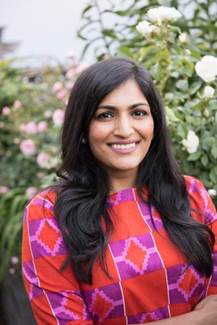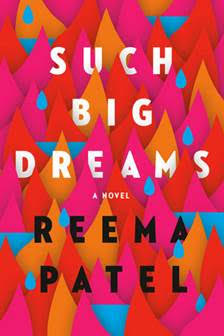BY RENU MEHTA
TORONTO

Such Big Dreams by Reema Patel is a book about India, specifically Mumbai, or Bombay as it was known before 1995. The story takes us through the journey of Rakhi who has grown up on the streets of the city and manages to elevate her life by being able to live in a slum and a job in an office. The author weaves the story of the protagonist, and the other characters while speaking about class distinctions, taking us through the lives of people living in the shantytowns, of others belong to the middle class and lifestyle of the very privileged and rich. As they say, there are three Indias in India.

(Reema Patel, author)
What I really like about the book is that it depicts the life in India perfectly, right from the narrative of the slums, through to the lives of people of the poor, moderate and rich. Through Patel’s words, I can actually visualize the life and relate to it. Nothing is overblown or swept under the carpet.
Patel’s story telling truthfully portrays the justice system, how an NGO operates and the people who tirelessly want to bring about change and yet are unable to. Justice For all, an NGO, brings to light the problems faced by the organizers, while they depend on international and other aid, offering opportunities to foreign students wishing to do volunteer work in India. One can sense the underlying frustration when they are unable to understand or navigate the country’s way of working.
The reference to hiring interns as free service is somewhat of a slander as volunteering is offered as a service all over the world. Even in Canada, new immigrants have to volunteer and get the expected Canadian experience before they are allowed to integrate into the Canadian system.
The book talks about fate and karma indirectly which is what every Indian will be able to relate to as well as non-Indians who are exploring or understand their spiritual self.
The author also briefly touches upon the consistent rivalry between the Hindu majority and the Muslim minority through the toppling of the Babri Masjid by Hindu mobs followed by the 1992 Mumbai riots. The hatred between the two communities developed after the 100 year British rule ended, that divided the nation into Muslim dominated Pakistan and Hindu dominated India.
This book also gives a perspective about what life is in India for those who have money, for those who don’t and how politicians and builders operate to benefit to what they want like the fire in Behrampada slum ostensibly orchestrated to construct buildings on where the slum dwellers live. Truly worth a read! I would give Patel’s book a rating of 4 **** out of 5.
